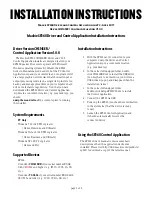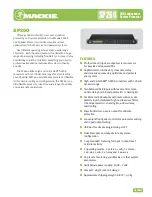
Public Version
www.ti.com
L3 Interconnect
Table 9-21. L3 Firewall Size Parameter Definition
Possible Configuration
Size
(1)
Region Size
Base_Addr
(2)
0x0
Region
Any
disabled
(nonsignificant)
0x1
1K-byte
0x0000000
0x0000400
0x0000800
.
0x2
2K-byte
0x0000000
0x0000800
0x0001000
...
...
...
...
0x17
2^(17-1)K-
byte
Others
Not allowed
-
(1)
When the size parameter is set to 0, the region is disabled.
(2)
The base address depends on user settings.
9.2.3.3.2 Priority Level Overview
Each L3 firewall region is prioritized. Depending on its priority level, a region can override the settings of
another region.
•
Region 0 is the only allowed priority 0 region (lowest priority).
•
Region 1 is the only allowed priority 3 region (highest priority).
•
Others regions are defined as priority 1 or 2.
CAUTION
LEVEL
bitfield
value
of
ADDR_MATCH_1
register
(Region
1
firewall
configuration) must be kept to his default reset value and must not be changed;
otherwise, the result will be unpredictable and can create unexpected protection
holes or denial of service.
Protection level is defined by the LEVEL bit
, where n is greater than 2.
represents the priority level with associated regions.
When an address hits two or more regions with different priority levels, the highest priority region
protections are applied. The overlay region can overlap all or a part of a nonoverlay region.
CAUTION
Configuring two overlapping protection regions with the same priority level
leads to undefined behavior.
Hardware behavior in the case of overlapping protection regions is undefined. A
region with higher priority must be used to mask a region that is being
reprogrammed, and any protection holes must be avoided during this
reconfiguration.
To change the protection settings of a region, follow this procedure:
1. Ensure that a free region is available to be used as a high-priority region.
2007
SWPU177N – December 2009 – Revised November 2010
Interconnect
Copyright © 2009–2010, Texas Instruments Incorporated















































